The global influence of the Hindu epic Ramayana, as told by postage stamps
Growing up in the 1960s, N Sridevi remembers the many Diwalis she spent listening to a priest reciting shlokas from the Sundara Kanda, the fifth book of the epic Ramayana. This book details the adventures of Hindu god Hanuman and is the 61-year-old’s favourite of the seven written by Valmiki. In one of the incidents in the Sundara Kanda, Hanuman creates havoc in Ravana’s garden, uprooting trees, after seeing the way Sita has been ill-treated. So when Sridevi, who was intrigued by stamps from a very young age, found a 2004 stamp issued in Canada depicting this scene—courtesy her niece, who lives there—she was naturally delighted.
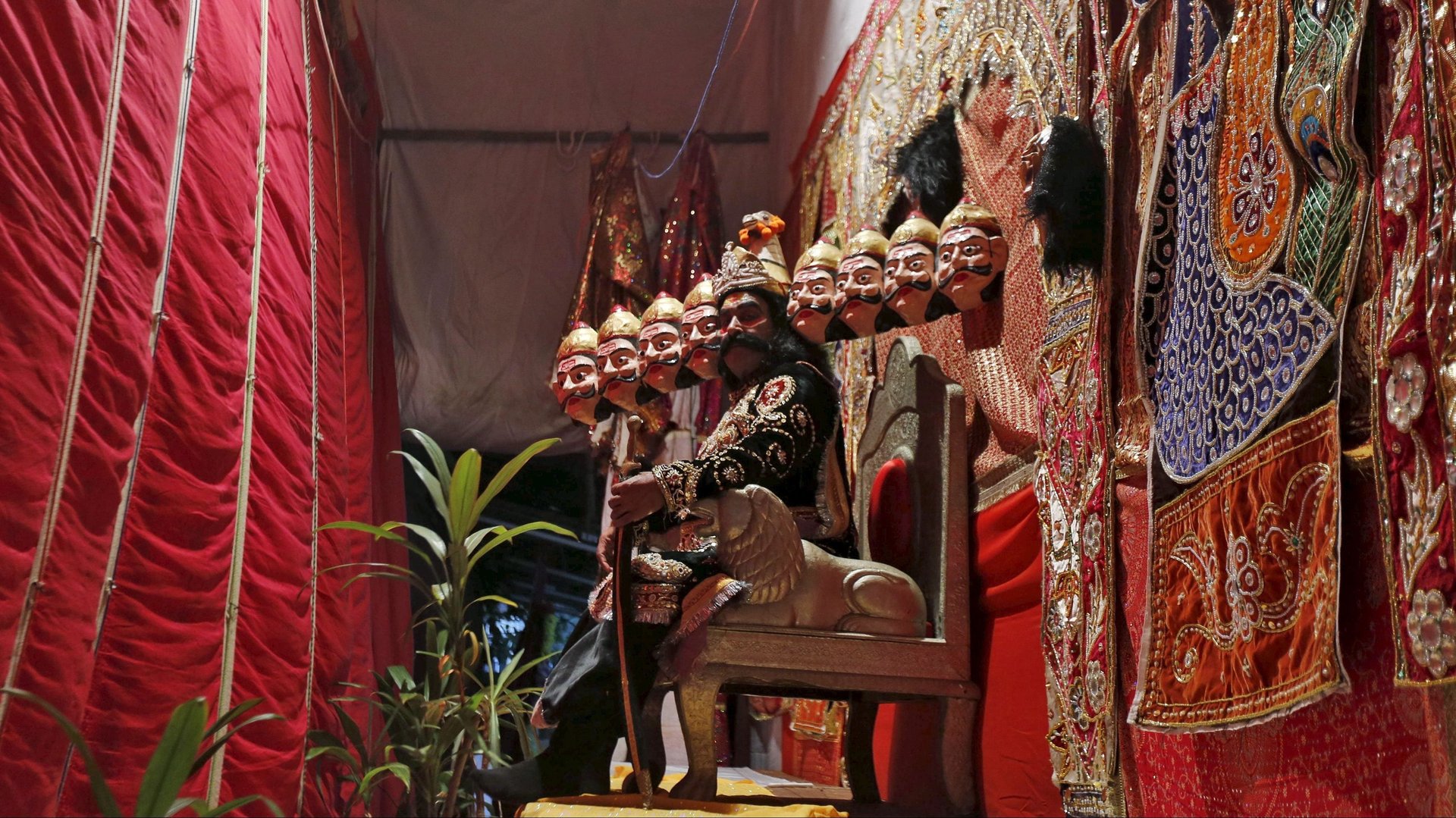

Growing up in the 1960s, N Sridevi remembers the many Diwalis she spent listening to a priest reciting shlokas from the Sundara Kanda, the fifth book of the epic Ramayana. This book details the adventures of Hindu god Hanuman and is the 61-year-old’s favourite of the seven written by Valmiki. In one of the incidents in the Sundara Kanda, Hanuman creates havoc in Ravana’s garden, uprooting trees, after seeing the way Sita has been ill-treated. So when Sridevi, who was intrigued by stamps from a very young age, found a 2004 stamp issued in Canada depicting this scene—courtesy her niece, who lives there—she was naturally delighted.
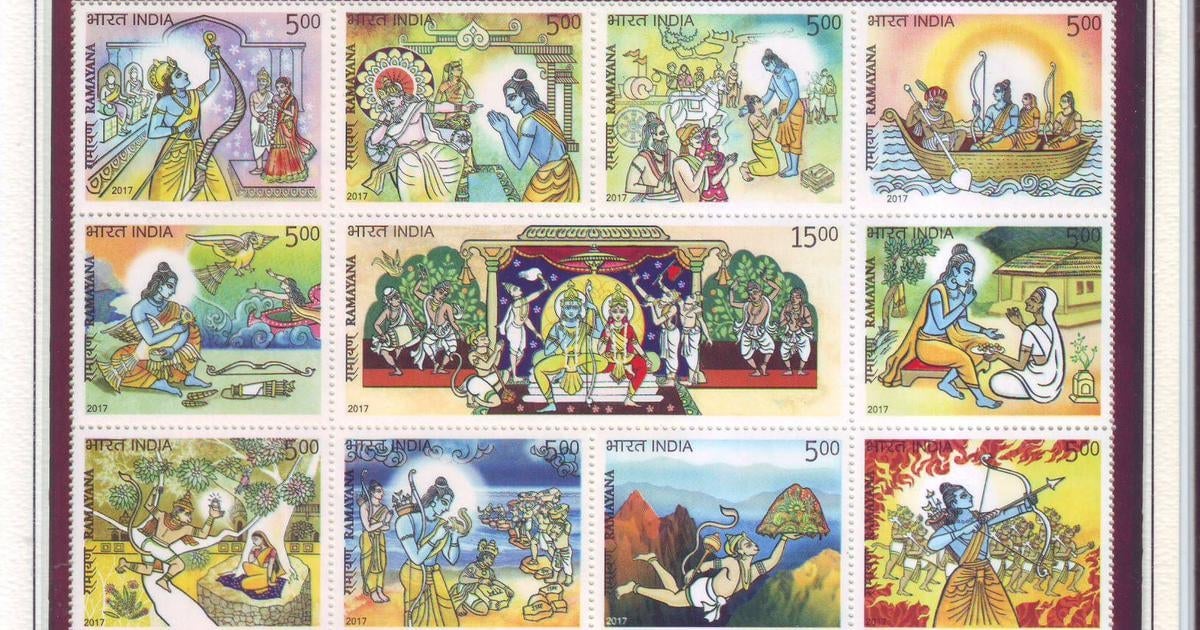
Bengaluru-based Sridevi started collecting stamps more than 20 years ago. But in the last six years, she has focused on collecting and compiling stamps based on specific topics such as Indian musical instruments, yoga, Indian classical dance forms, and the Ramayana. “It is such a significant epic to me personally and also one that has influenced cultures and religions all over the world, so I thought I would build a collection around it,” said Sridevi.
The Ramayana collection, which she started actively building earlier this year, consists of around 100 stamps and has been exhibited in several states. Titled Good over Evil, the exhibition displays her stamps, spread over 32 A4 sheets. It is neatly divided into seven categories, each corresponding to the seven books that make up the Ramayana—Bala Kanda, Ayodhya Kanda, Aranya Kanda, Kishkinda Kanda, Sundara Kanda, Yuddha Kanda, and Uttara Kanda. The exhibition chronologically follows the sequence of events as they happen in the epic.
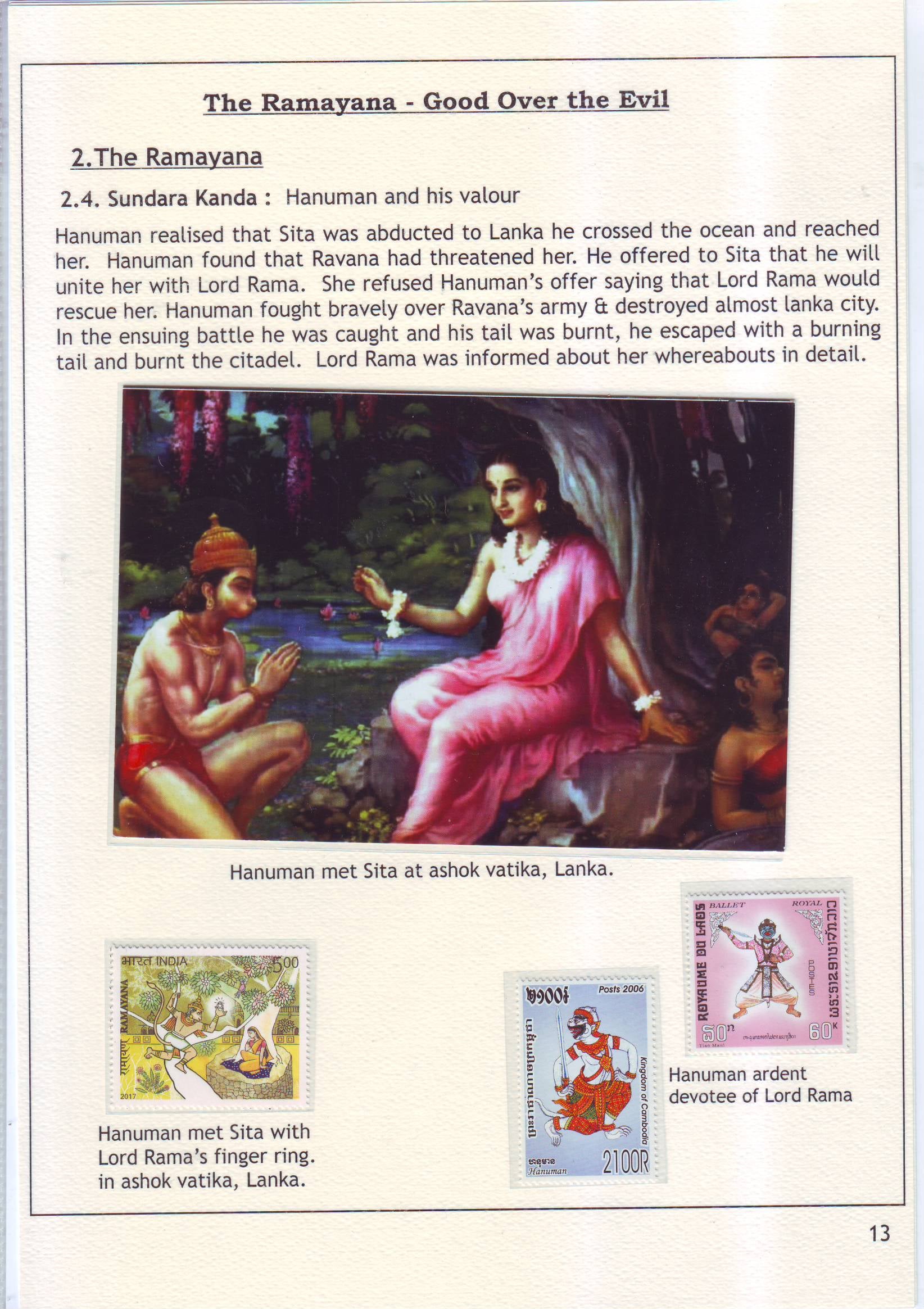
“The epic originated in India but has been a source of artistic inspiration to countries across southeast Asia and references to it can be found in the cultures of Indonesia, Malaysia, and the Philippines,” said Sridevi. “Indonesia does a Ramayana ballet (a dance drama based on the Indian epic), while Thailand has the Ramakien (the national epic of Thailand) based on the Ramayana. Various stamps issued in these countries over the years have depicted events from the text.”
Stamps from a 1962 series issued by the government of Indonesia depicting characters from the Ramayana ballet are a part of Sridevi’s collection, as are Thai stamps from the 1990s that show Rama meeting Sita and fighting Ravana.
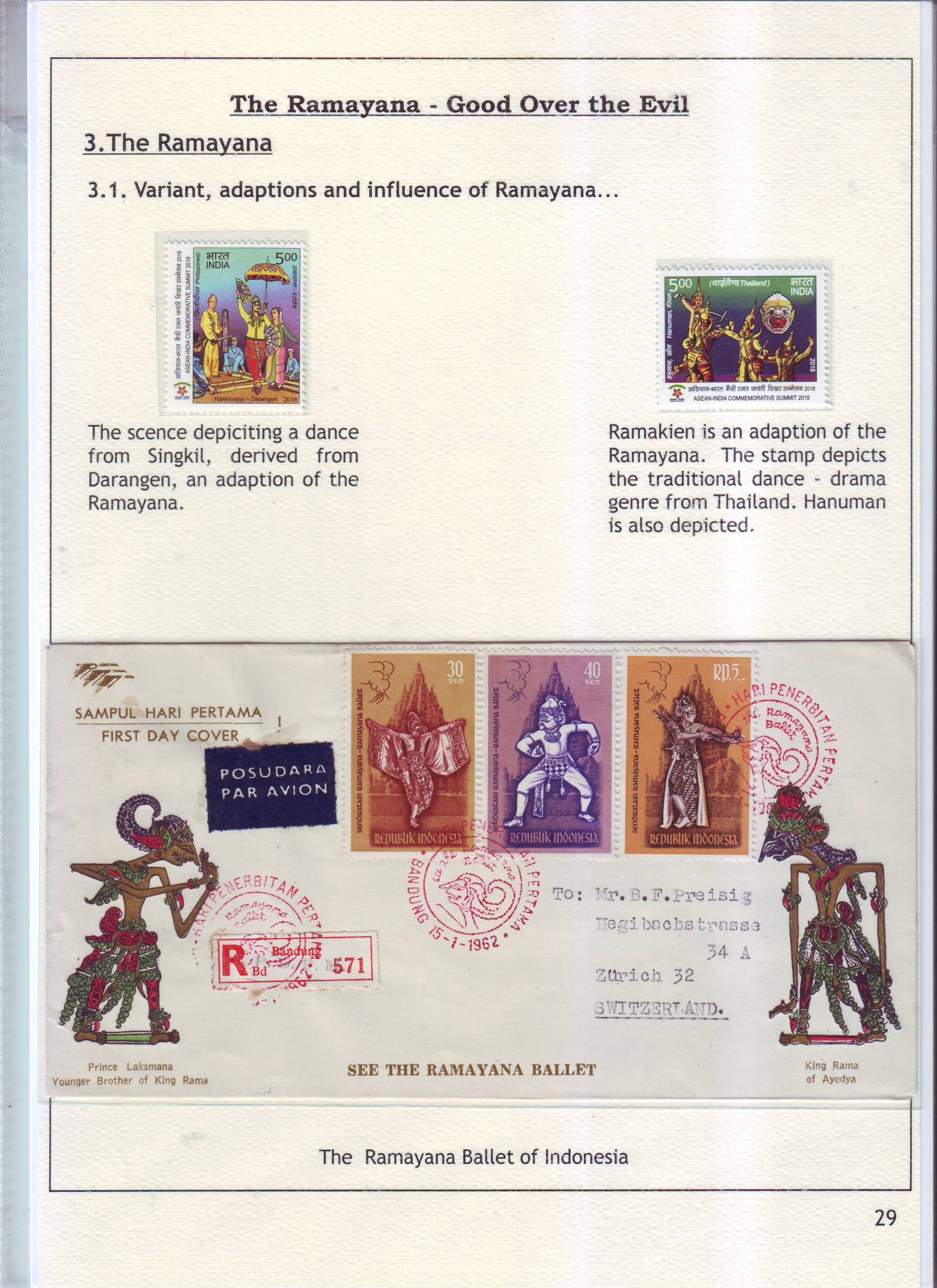
Her collection also features stamps that were issued in India’s pre-independence era. One of them is from the 1930s, a time when India had hundreds of princely states. In 1962, India Post discovered stamps issued by the princely state of Shahpura, now a part of Rajasthan. Until then the philatelic world had been unaware of the existence of a postal system in the state. “The stamps issued by them and the ensign of the princely state bore the image of Hanuman and his mirror image on either side of the sun,” said Sridevi.
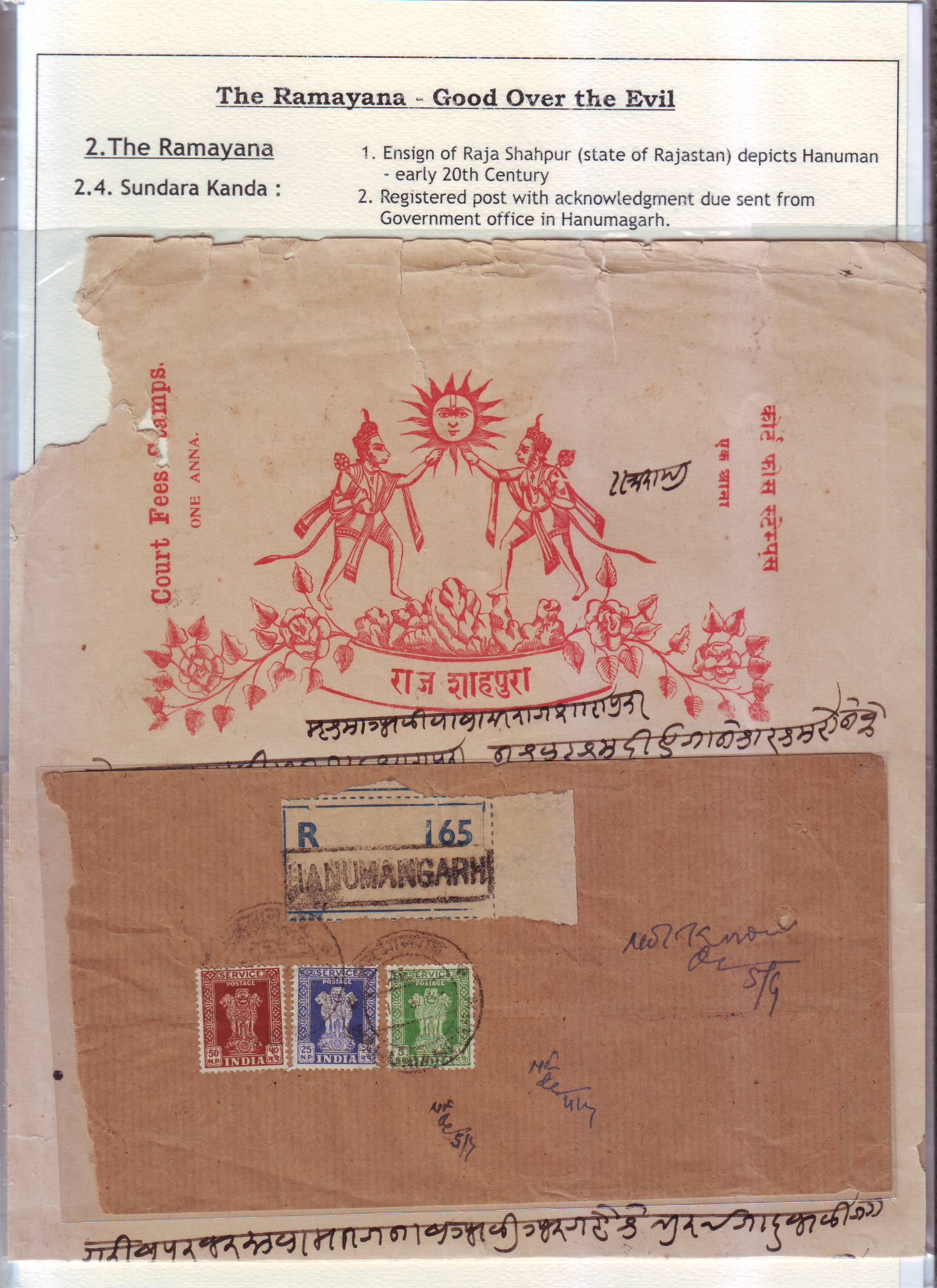
The Sundara Kanda holds a special place in Sridevi’s heart because of its protagonist. The pages in the exhibition dedicated to Hanuman go beyond just stamps that focus on his role in the epic. She has managed to collect postcards featuring Hanuman, as well as postal material with acknowledgement stamps from government offices in Hanumangarh in Rajasthan. Sridevi also has a series of stamps depicting Hanuman as imagined in other cultures—as Hanoman in Indonesia and Ninh Laphath, or the black monkey, in the Laotian ballet based on the Ramayana.
Sridevi is not alone in her interest in Ramayana-themed philately. Vennam Upender, a postmaster general in Madurai, has collected over 400 stamps based on the epic. “Ramayana and Mahabharata are relevant to our society no matter which point in time we live in and a philatelic explanation of the epics is something that is not often attempted,” said Upender.
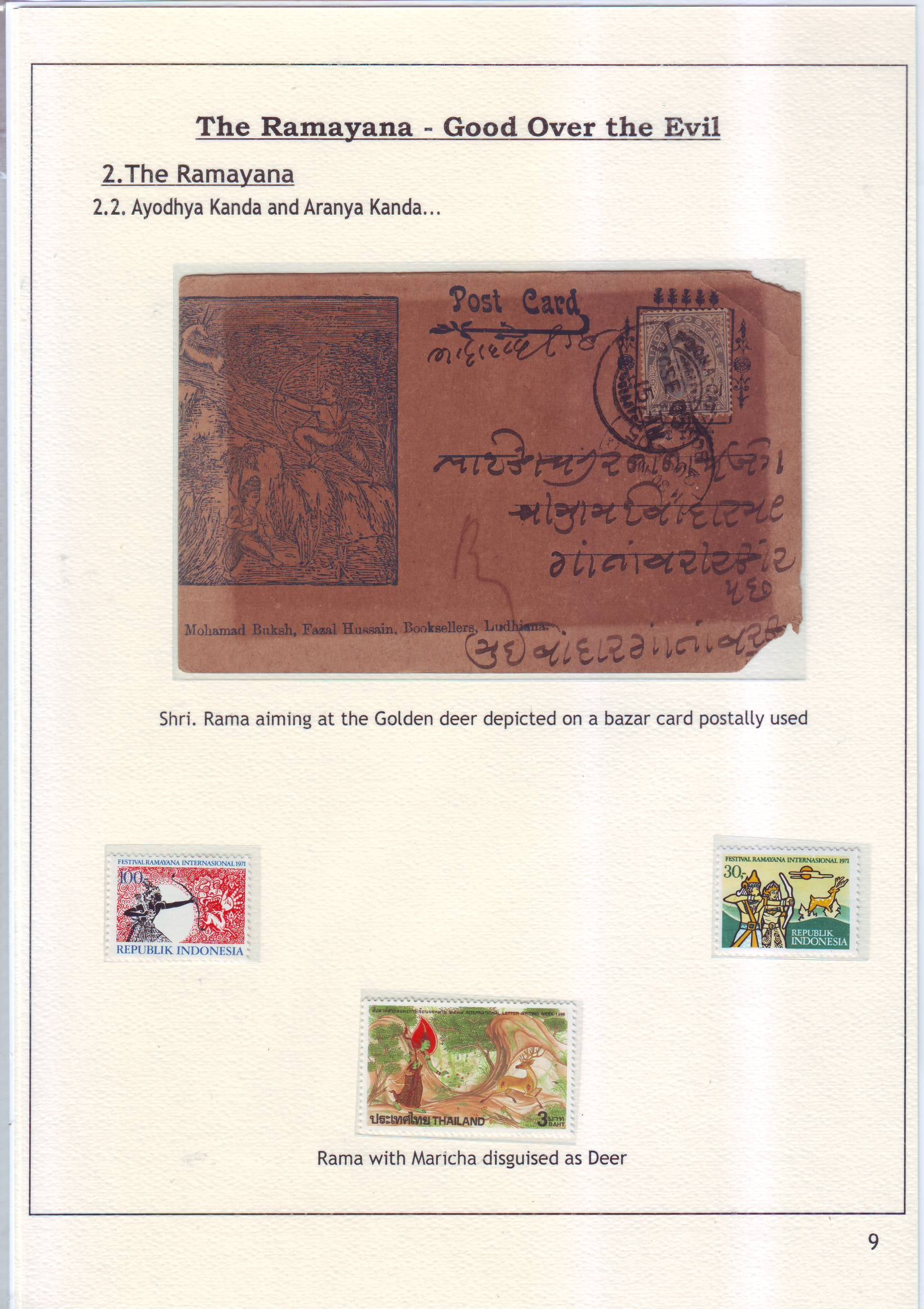
For Sridevi, collecting stamps is more than just a hobby: it is a way of keeping her mother’s memory alive. “I didn’t want to give in to the sadness and loss I felt at my mother’s death,” she said. “She collected many things and both my parents always encouraged our curiosity. I also have a large collection of coins thanks to this habit.”
Each stamp costs Sridevi anywhere between Rs5 and Rs600 ($0.07 and $8.74), depending on how rare it is, where it is being sold, and who the dealer is. She is helped by her nieces, who live abroad, and inform her of any auctions happening in Australia and Canada. “Sometimes I end up finding dealers online, sometimes it is word of mouth, and sometimes the government issues limited editions of stamps,” she said.
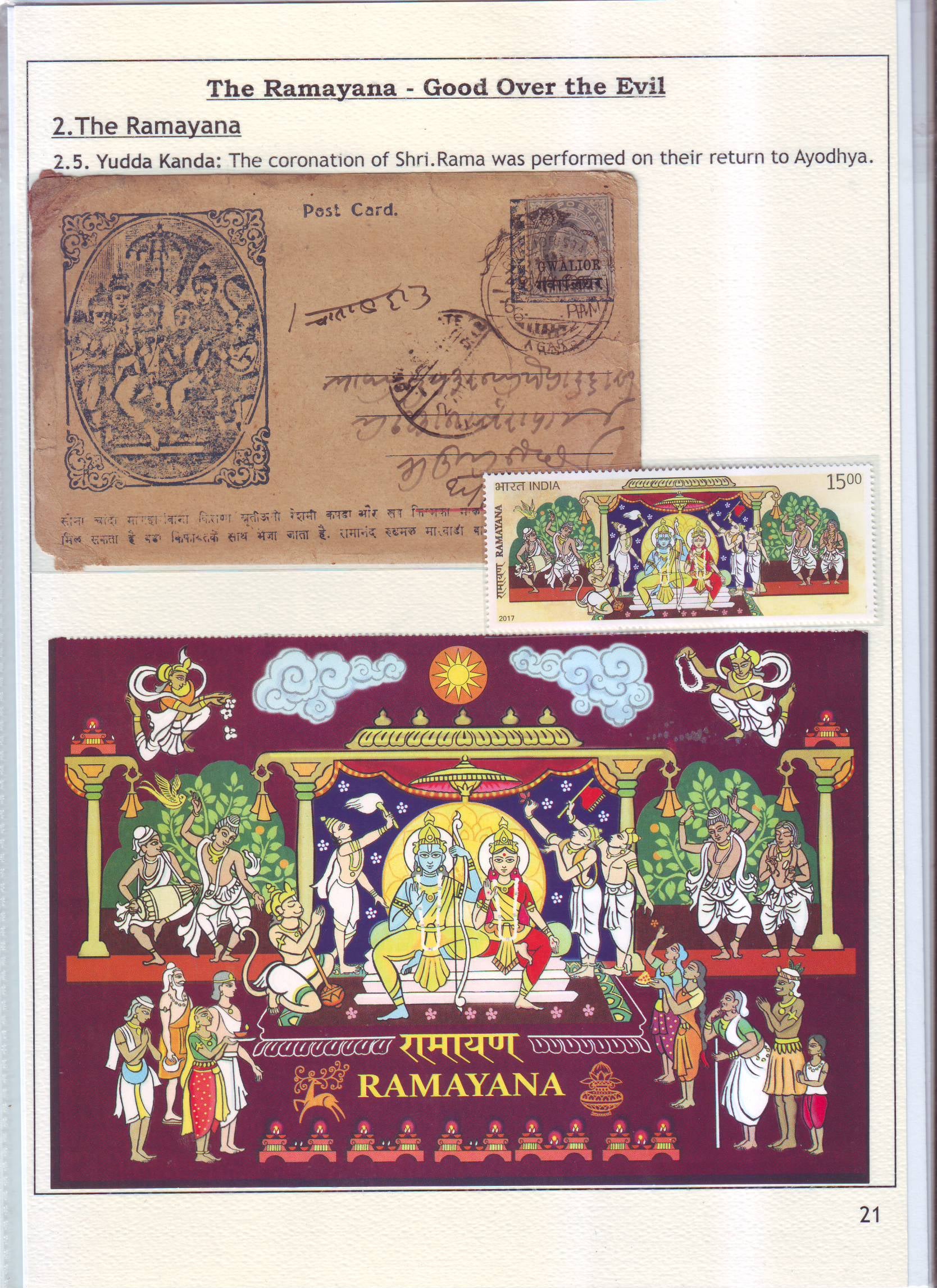
This post first appeared on Scroll.in. We welcome your comments at [email protected].